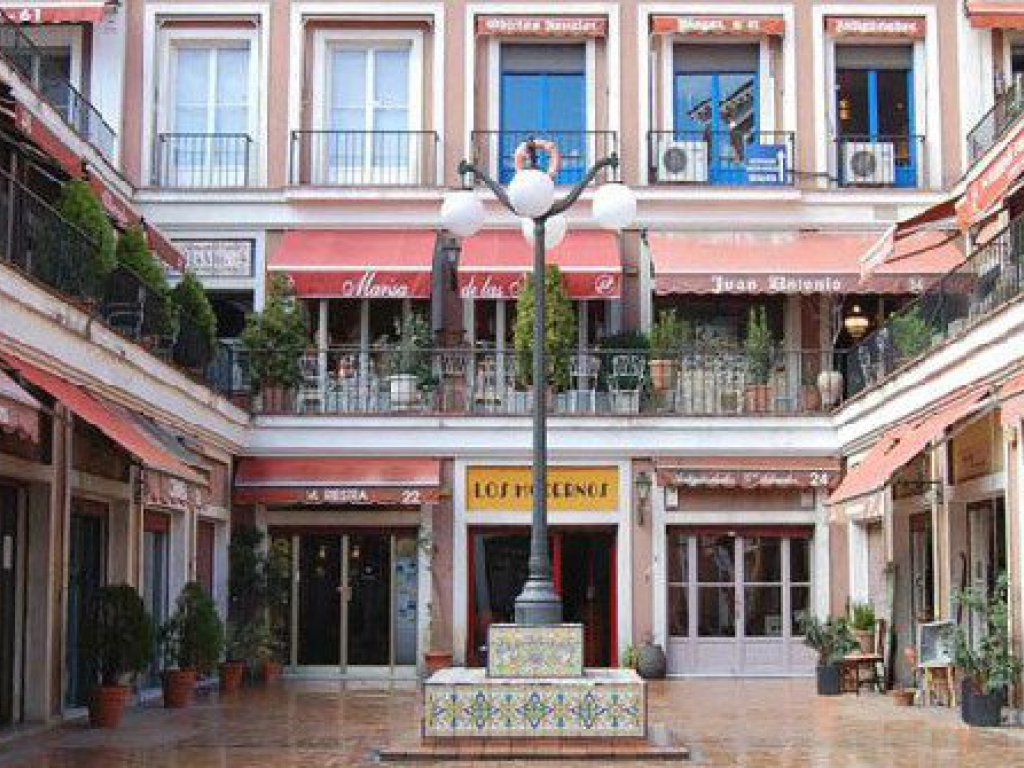A morning at the Rastro
If you want to show off your knowledge of Madrid, you have to spend a Sunday morning in El Rastro, the most popular and traditional market in Madrid. You won’t have time to go through it all, but you’ll discover the flavour of the authentic by strolling through its streets, from Cascorro Square to Embajadores Street, passing through the Ribera de Curtidores and adjacent streets and squares, with its wide catalogue of curious, welcoming and enigmatic shops.
The Rastro, Cultural Heritage of the City of Madrid, has been held for more than 250 years from 9am to 3pm every Sunday and bank holiday, in the area that used to be occupied by the tanneries next to the Matadero slaughterhouse (now a cultural centre). It is believed to have received its name from the trails (rastro in Spanish) left by the carcasses as they were transported from the slaughterhouse to the tanneries, where the animals’ skin was turned into leather goods.
So, the best thing to do now is to let yourself get carried away and surprised whilst soaking in the atmosphere and the more than 3,000 stands that are set up in the neighbourhood and discover the most authentic corners of the Rastro, the most prestigious ones.
Here are 10 tips to guide you through the Rastro and find some classic spaces:
Ribera de Curtidores
Ribera de Curtidores is the main artery of the Rastro. It is a long, sloping avenue that is filled on both sides with stands. Here, you will be able to find everything: new and second-hand clothes, plugs and electrical appliances, shoes, costume jewellery, books, albums, crafts, furniture, lamps, leather goods, cameras, etc.
Galleries in the area
Check out Galerías Piquer (Ribera de Curtidores, 29), the place where much of the Arde Madrid television series is set and where you can find everything from original canvases, art decò furniture or modernist decorative objects, and the New Galleries (Antigüedades El Jueves) (Ribera de Curtidores, 12), because here you will find the best antiques in the area and practically the best in Madrid.

Calle de Fray Ceferino González
Used to be known as the street of the birds because it was specialised in the sale of animals and many people went there because they could find all types of exotic animals, as well as dogs, cats and tortoises.
Calle de San Cayetano
Is known as “the painters’ street” because this is where many artists concentrated to sell their paintings. There are also many shops selling original pieces of art and the necessary materials to paint professionally.
Plaza del Campillo Nuevo
Between the Embajadores and Puerta de Toledo roundabouts, is a place where people come and go looking for stickers (antique and modern), magazines from another era and antique letters and books.
It is a very peculiar and authentic place, along with the neighbouring Plaza del General Vara del Rey and Calle de Rodas. Here, you can also find antiques, coins, comics, vinyl LPs, snippets, porcelain dolls…
The Museum of Popular Arts and Traditions, an interesting museum that keeps ethnographic pieces from all over Spain can also be visited, and, on the first and third Saturday of each month, go to Saturdays at the Rastro, the most traditional and emblematic leisure fair (in Plaza del General Vara del Rey), with the finest antiques, vintage items, old coins, collectors’ items, gastronomy and entertainment.
Calle de Carlos Arniches and Calle Carnero
Calle de Carlos Arniches and Calle Carnero are specialised in the sale of antique books. So, if you want to buy a previous edition, just head for these streets. La Corrola Cultural Centre, headquarters of the Museum of Popular Art and Traditions, a project by the Autonomous University of Madrid to foster creativity and scientific innovation capacity, can be found here.
Calle de Mira el Río Baja and Calle Mira el Río Alta
In Calle de Mira el Río Baja and Calle Mira el Río Alta, there are plenty of shops and stands focusing on small antiques: books, old portraits, postcards, rickety typewriters or analogue cameras that are only sought after by collectors.
Street artists
Street artists make the most of the large crowds to show off their art around the Rastro, so it is likely that you will be able to enjoy an improvised street performance. You will also find wafer sellers and some typical Madrid characters, of which there are plenty in the novels by Pérez Galdós.
Eat and drink
Wandering around the stalls at the Rastro works up an appetite and you must visit one of the tapas bars in the area, to have vermouth or a beer.
There are many options, but we suggest some emblematic establishments, such as El Capricho Extremeño (Carlos Arniches, 30), an establishment famous for its variety of toasted bread, served with octopus, eels, breaded chicken, smoked salmon, Iberian ham…
Another traditional option is to visit Casa Amadeo to savour the typical snails in sauce (Plaza de Cascorro, 18) or Bar Santurce, in Plaza del General Vara del Rey, 14 (there are no chairs but some coveted roasted sardines to eat standing up).
You can also opt for eating a stew at Malacatín (Ruda, 5) or having vermouth or a traditional Asturian dish at La Bobia (San Millán, 3).

How to get there
The best way of getting to the Rastro is by bus or by metro. You can go to La Latina or Tirso de Molina stations if you want to start your route at Plaza de Cascorro, or Embajadores station (which also has a Cercanías station) if you prefer to walk up the slope of this traditional market.
If you want to take the opportunity to contemplate one of the old entrance gates to Madrid, get off at Puerta de Toledo Metro station.






